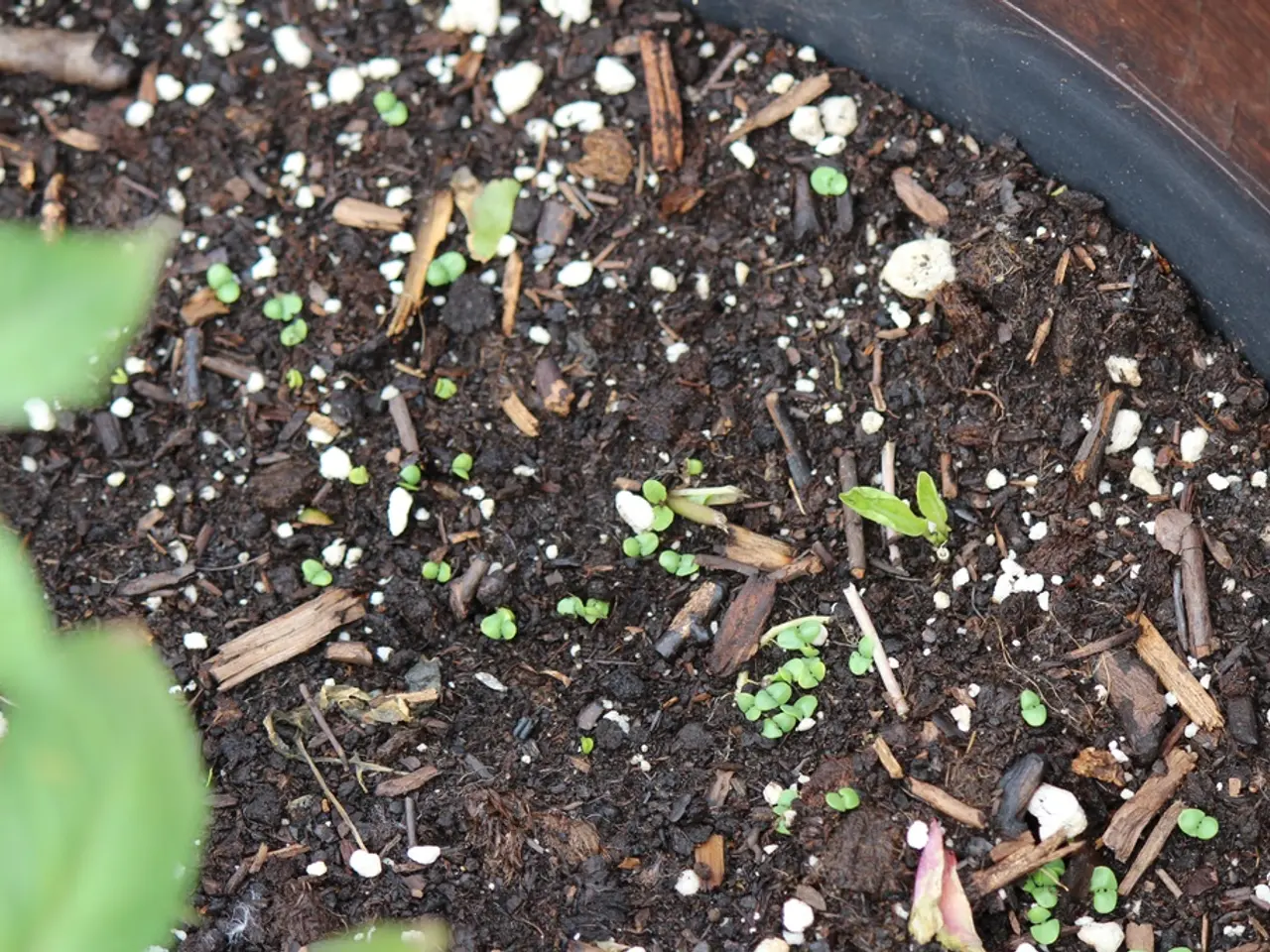Guide for Prepping Soil for Herb Cultivation: A Detailed Walkthrough
Preparing the Perfect Herb Garden: A Step-by-Step Guide
Ready to grow a thriving herb garden? Here's a simple guide to help you get started.
1. Testing Soil Quality
Begin by testing your soil's quality. This will help you determine essential parameters such as pH, nutrient levels (nitrogen, phosphorus, potassium), and organic matter content. You can use DIY kits or send samples to a professional lab. Most herbs prefer a pH range around 6.0 to 7.0 (mildly acidic to neutral). Adjust pH if needed by adding lime to raise it or sulfur to lower it.
2. Improving Drainage
Loosen compacted soil to a depth of 8-12 inches using a garden fork or tiller to improve root penetration and water movement. Incorporate organic matter such as compost, leaf mold, or aged manure (2-3 inch layer worked into soil) to enhance soil structure, fertility, and drainage. For heavy clay soils, adding sand or compost can help improve texture and drainage. Mulching with organic materials (bark, dried leaves) retains moisture but prevents waterlogging. In poorly draining areas, consider raised beds or containers filled with well-aerated soil mixes.
3. Selecting a Suitable Location
Choose a site with full sun to partial sun, as most herbs thrive with 6+ hours of sunlight daily. Track light availability over the seasons. Assess soil type and topography, avoiding low spots where water might pool or areas prone to waterlogging. Consider microclimates created by fences, walls, or trees that might affect temperature or wind exposure. Make sure the location has good air circulation but is sheltered from strong prevailing winds.
4. Preparing the Soil
To prepare the soil for growing herbs effectively, mix in 4 inches (10 cm) of organic matter into the top 8-12 inches (20-30 cm) of soil to improve drainage. Adding organic compost in early spring is beneficial for herb growth, especially in heavy garden soil. Mixing in other organic matter such as peat moss, pine bark, or coconut husks can enhance both drainage and moisture retention for herbs.
5. Planting Your Herbs
Herbs should be planted in a sunny spot, receiving around 6-8 hours of direct sunlight per day. Adding 2-3 inches (5.1-7.6 cm) of fine pine bark, compost, or leaf mould to light sandy soil can improve moisture retention. For smaller areas, work in organic materials such as compost, peat moss, and other organic materials. To improve drainage, gardeners can add organic matter such as peat moss, coconut husks, or compost to the soil. If your garden soil is heavy, consider growing herbs in raised beds or planters for better drainage.
6. Additional Tips
- If adjustments are needed, agricultural lime or dolomite can be added to raise the pH, while sphagnum peat can be mixed into the soil to lower it.
- Testing the soil quality in the spring before planting is recommended.
- Introducing earthworms to your garden beds can help aerate and fertilize the ground.
- A soil pH test can be performed to ensure it falls within the optimal range of 6 to 7.
- Moistening the soil lightly before tilling can make it easier and more effective.
- Adding gypsum can help loosen compacted soil.
- Compost improves drainage and helps with water retention for herbs.
Following these steps will help you create a healthy, thriving herb garden. Enjoy the fresh aromas and flavours of your homegrown herbs!
Adding a home-and-garden touch to your lifestyle, venture into cultivating a herb garden that uplifts both your culinary preferences and overall well-being. To integrate your new herb garden into your home-and-garden aesthetic, consider utilizing organic materials like compost and leaf mold for improved soil structure, ensuring a harmonious blend of functionality and beauty within your outdoor space.




